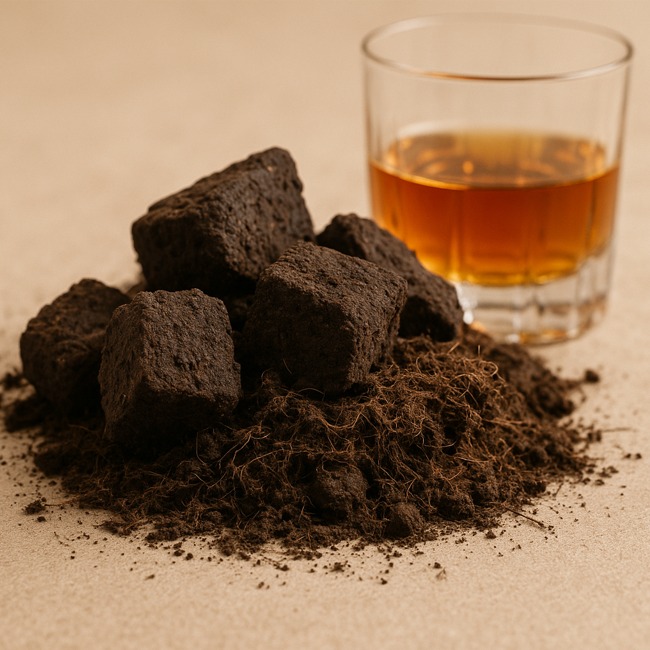The science of malt whisky smoking.
The amount of peat used in whisky production depends on multiple variables: the type of peat, the method of drying the barley, the time of exposure to smoke and the level of phenols desired in the final distillate.
1. Phenol levels: the measure of smokiness
The level of smokiness in whisky is measured in ppm (parts per million) of phenolic compounds, mainly guaiacol and creosol, responsible for the smoky aroma and flavor.
– Lightly smoked whiskies: 2-5 ppm
– Medium level: 15-25 ppm
– Highly smoked: >50 ppm
These values correspond to the malt before distillation. After distillation and aging, the phenol level is reduced, remaining between 20% and 50% of the original value.
2. Drying method: how the smoke is transferred to the barley
The traditional peat kilning process consists of drying malted barley over a peat-fired fire. The amount of peat used varies according to the duration of kilning, smoke density and moisture content of the malt.
– Typical exposure time: 12 to 24 hours.
– Average peat consumption: between 20 and 50 g per final bottle (calculated on the basis of about 8-10 kg of barley to obtain a 700 ml bottle at 40% vol).
– Direct relationship: the longer the time and the greater the smoke density, the greater the phenol retention.
There are also less frequent methods such as barrel smoking, which provides milder smoky notes, but without significant impact on ppm levels.
3. Peat types and origins: impact on the sensory profile
Not all peats are the same. Their composition varies according to the decomposed plant material (moss, heather, woods) and the depth and humidity of the extraction soil.
– Moss peat: lighter and more floral aromatic profile, lower lignin content.
– Heather peat: higher organic and earthy content, with denser and more intense notes.
– Maritime peat (Islay): contains algae and saline material, providing characteristic medicinal and saline notes.
The geographical region directly influences the type of peat and therefore the identity of the whisky: Scotland (Islay, Highlands), Ireland or Japan have peats with radically different profiles.
4. So how much peat is needed?
For a standard 700 ml bottle of malt whisky:
– Approx. 8-10 kg of malted barley is required.
– To dry that amount with a profile of 40-50 ppm, 20-50 g of peat is used, depending on its density and moisture content.
– Whiskies with >80 ppm may require up to 70-100 g per bottle at the malt drying stage.
The result: peat, precision and terroir.
Peat is not only a source of heat: it is a sensory vector that defines the style and personality of the whiskey. Its quantity, origin and application determine the level of phenols and thus the final profile of the distillate. Understanding these parameters allows you to optimize the design of smoked products with technical precision.

